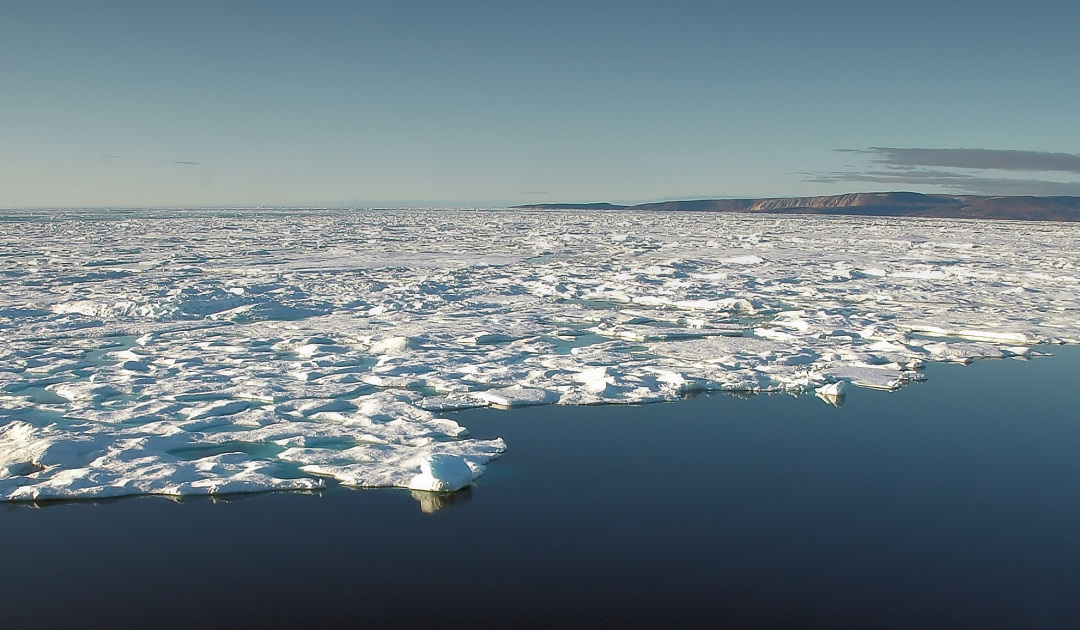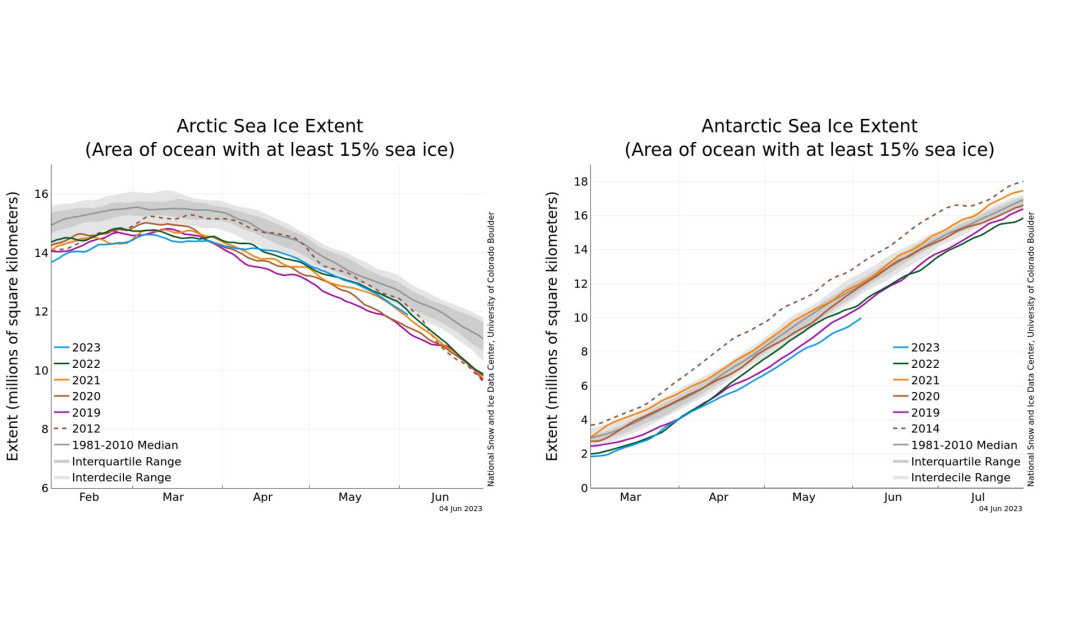
Both the Arctic and Antarctica have seen their midsummer and midwinter celebrations and the days begin to grow shorter, resp. longer again. However, it is not yet half-time for the sea ice on the corresponding oceans; in fact, it will not be until September. But the outlook for their developments is anything but encouraging, according to a recently published report.
Roughly 4.54 million square kilometers for the Arctic Ocean and about 17.92 million square kilometers in the Southern Ocean are the projections of expert groups for sea ice development next September. These figures were published last Friday in the Sea Ice Outlook of the Sea Ice Prediction Network. For the Arctic, this would mean a similar extent to last year, while the Antarctic is heading for a new negative record in its maximum extent.



Regarding Antarctica, the summary report does not present a very bright scenario. Once again this year, the maximum sea ice extent around Antarctica will be below the long-term average of 18.5 million square kilometers. This data was provided by nine different groups of experts from around the world. Hence, the trend of the lowest minimum extent of Antarctic sea ice already recorded in February continues, the report states.
Looking at the extent of Antarctic sea ice over the entire 44-year period observed so far, a very weak trend of sea ice increase continues to be observed. But this year’s trend in sea ice extent is below the long-term average for the fifth consecutive year, as calculated from satellite measurements and other data collections compiled since 1979.
The extent to which global climatic changes have aided this series of negative records was discussed by experts earlier this month at a symposium organized by the AWI, the University of Bremen and the International Glaciological Society.


Regarding the Arctic, a region traditionally ringing the ever-louder alarm bell on the effects of climate change, the data also show no real recovery in the downward trend. Admittedly, no new negative record is set, as the data from a total of 38 groups and institutions show. But a likely 4.54 million square kilometers still puts it at the lower end of the average calculated from measurements collected since 1979. The report adds, however, that there is a relatively wide range of between 2.95 and 5.60 million square kilometers between the 38 values submitted, and about half of the teams assume a lower or higher value, respectively.
Here, too, the forecasts are more or less consistent with those made in February, the time of maximum expansion. According to most experts, there should not be any major surprises like in 2012, but the possibility cannot be ruled out either. Back then, sea ice extent was on average for a long time. But due to a sudden warm spell, the sea ice melted so rapidly starting in early June that by September the sea ice had decreased to just under 3 million square kilometers.
The Sea Ice Prediction Network will now continue to publish forecasts in July and August and then compare them with the recorded data for a final report at the end of September. This will then show whether the values obtained from models, projections and statistics can represent the actual trend or are surprised by nature. In general, however, the sea ice trend is continuing to move toward nearly ice-free polar oceans in the summer.
Dr Michael Wenger, PolarJournal
Links to the portals:
More about this topic





